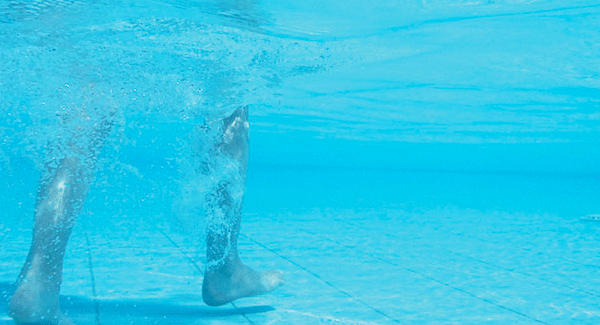Hit the Pool to Relieve Joint Pain
Work out in water for more support and less pain.
Remember what it was like to walk without aches? Get that sensation again by taking your workout to the water.
“Exercising in a pool provides nearly instant relief from pain and stiffness,” says Mary Sanders, PhD, a clinical exercise physiologist in Nevada and director of WaterFit program. “Even if you don’t feel comfortable walking on land, the buoyancy of water gives you freedom of movement while providing support.”
Slip on your swimsuit and try these aquatic workout tips from Sanders.
Using the Pool to Relieve Joint Pain:
Start simple. Begin with a basic forward walk, with shoulders aligned over hips and hands at your sides. Lead with your heel, rolling to the ball of the foot, then push off with your toes. Swing your arms opposite your legs, pushing and pulling the water along your sides.
Shift backward. Research from Japan shows that walking backward in the water engages more muscles, especially around the spine, quads and shins, while also boosting heart rate. It also might help your balance. Start on your toes, then push down on the balls of your feet and roll to the heels, moving opposite arm and leg while pushing water behind you with your hands.
Go to the deep end. The more submerged your body is, the lighter the load on your joints. If you have arthritis in your shoulders or spine, keeping your upper body under water increases the fitness benefits, helping burn more calories while improving your mobility and range of motion. Wear a buoyancy belt to help you stay upright.
Be safe. Water shoes prevent slipping, webbed gloves add resistance to your workout and a buoyancy belt helps stabilize you.
The recommended water temperature for warm water exercise is 83 to 90 degrees. Most people find temperatures in this range to be comfortable and soothing to sore joints and muscles, which makes exercise easier. In general, the slower the exercise movements, the warmer the water needs to be for most people.
You may want to look into aquatic classes for people with arthritis at YMCAs, health clubs, hospitals and rehabilitation centers. Also, check with a licensed physical therapist who can give you guidance on appropriate levels of intensity, duration and frequency of classes.

Stay in the Know. Live in the Yes.
Get involved with the arthritis community. Tell us a little about yourself and, based on your interests, you’ll receive emails packed with the latest information and resources to live your best life and connect with others.


